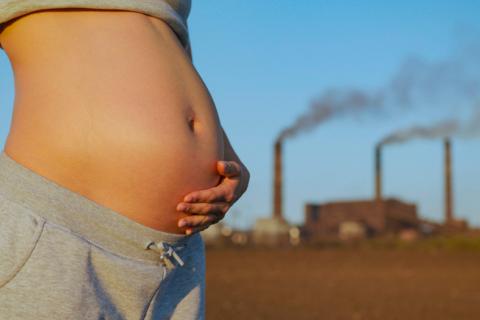
According to the World Health Organization (WHO), 90% of the population breathes polluted air, and according to the latest estimates of this organization, every year 13 million people die prematurely worldwide due to environmental causes. Some population groups are more vulnerable to air pollution, such as children, the elderly, people with respiratory diseases such as asthma, or pregnant women. In fact, a large new study has found that exposure to environmental fine particulate matter PM2.5 – (solid or liquid particles smaller than 2.5 micrometers that are generated by traffic and industry) – during pregnancy increases the risk of stillbirth. Specifically, they attribute almost a million stillbirths a year to air pollution, which accounts for almost half of the total number of stillbirths that occur worldwide.
The study, which collected data from 54 countries in Asia, Africa and Latin America, where 98% of stillborn babies are reported, was conducted by a team of researchers affiliated with numerous institutions in China who have worked on collaboration with a colleague in the United States and have compared data from the USAID Department of Health Surveys to gather more data on this association. These scientists have found a link between air pollution and stillbirth rates, especially in the poorest countries, they have published in the journal Nature Communications.
Air quality influences fetal death
A fetus born dead after the 20th week of pregnancy is considered stillbirth, and previous studies have estimated that two million of these births occur in the world each year, the majority in underdeveloped countries or countries with low economic resources. Fetal death in late pregnancy is mainly due to abnormalities in the fetus (anatomical or genetic), health problems of the mother or with the placenta, or complications during childbirth.
Countries with the highest stillbirth rates had higher amounts of PM2.5 fine particulate air pollution
The authors of the new research suspected that air pollution may also play a role in stillbirth, and that this could explain why so many babies are stillborn in the third world, and decided to look for possible connections between air quality and the stillborn babies. To do this, they cross-referenced data from Department of Health surveys, comparing the number of stillborn babies per country with air pollution rates, focusing on fine particle air pollution PM2.5.
The researchers discovered a clear pattern: Countries with the highest rates of stillbirths had higher amounts of fine particulate air pollution. At the top of this sorry list was India, which is the country with the highest average number of stillbirths: 217,000 out of 25 million births each year, and which was also near the top of the list of countries with the worst. fine particulate air pollution: previous research has shown it to average 60.15 Ug/m3, while the WHO has set a guideline of 5 Ug/m3 as a safe level of fine particulate air pollution.
The researchers have stated that their findings can be used in a positive way, since it has been shown that breathing polluted air can increase the risk of stillbirth, pregnant women can take measures to reduce this risk and, for example, use masks N95 when outdoors and avoiding going out on particularly bad days whenever possible, as well as using air purifiers indoors.
.